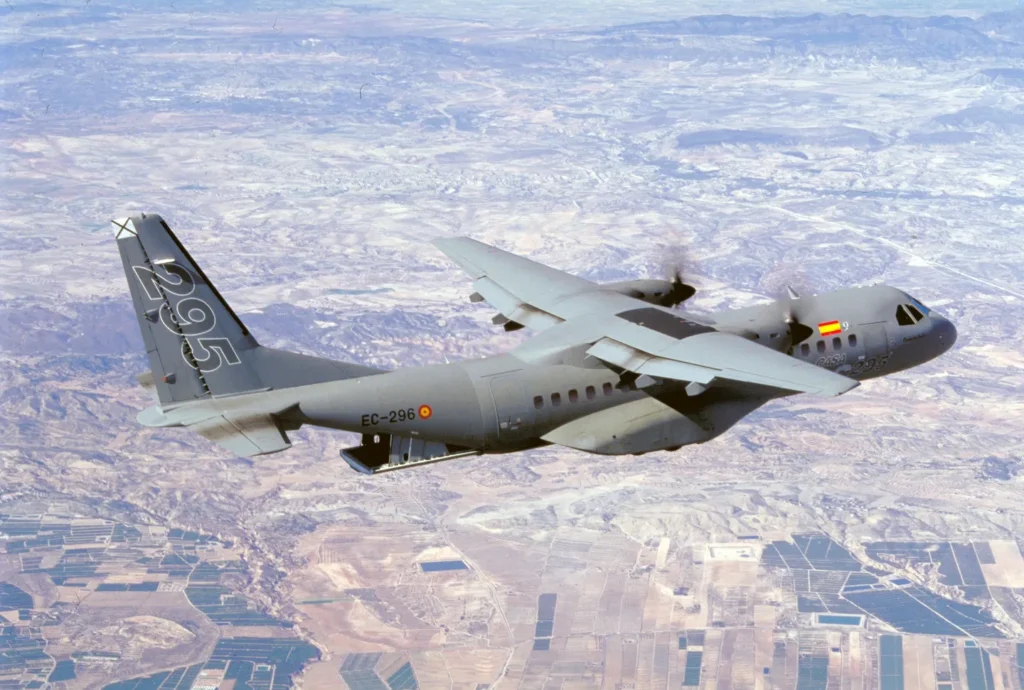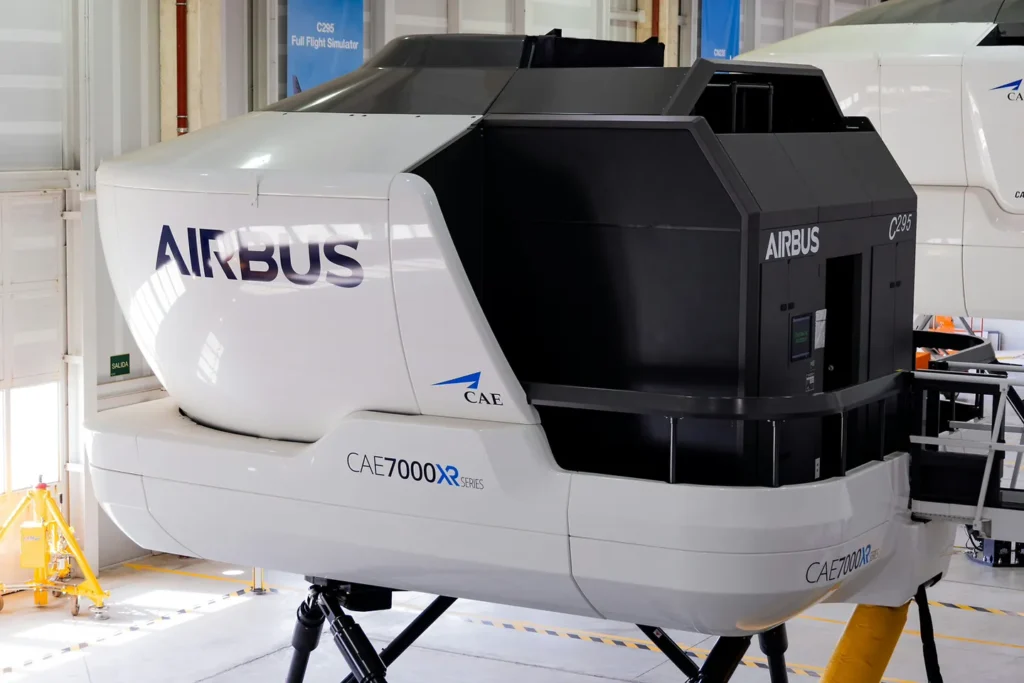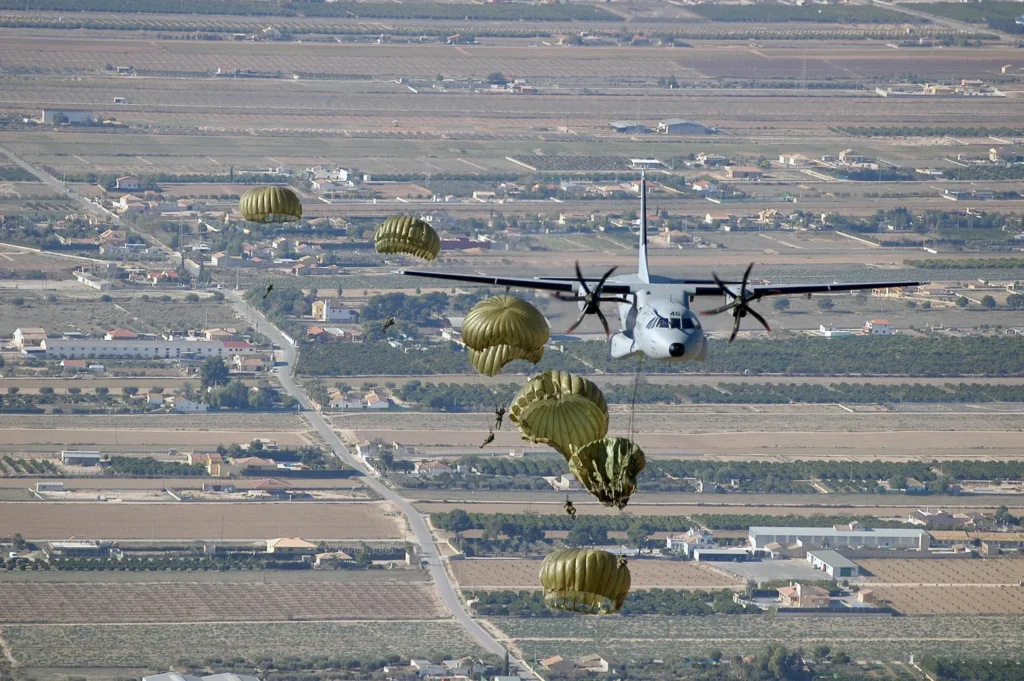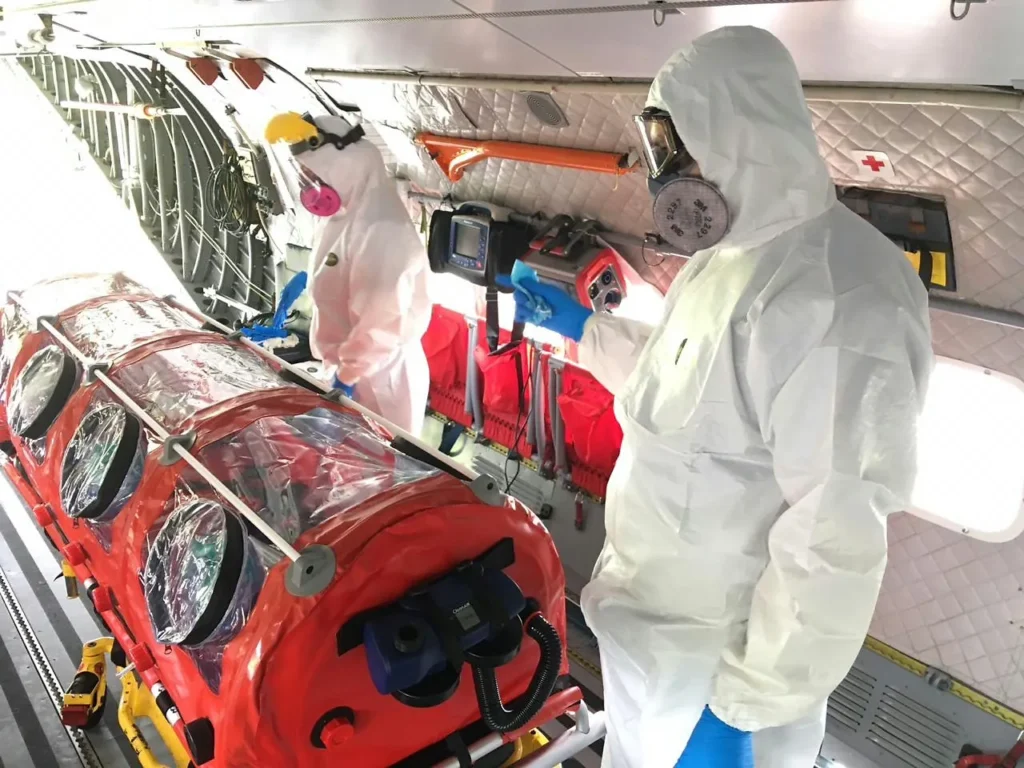FRANCE– The Airbus C295 medium tactical transport aircraft has achieved 300 orders, marking a significant milestone.
From the Pacific Ocean to the Arabian desert, from tropical jungles to the Sahel and the Kazakh steppe, the C295 and its market share are a success story for the European and Spanish aerospace industry. Here are 45 intriguing facts and figures about this remarkable aircraft.

From First C295 to the 300th
The Airbus C295 has achieved 300 orders with the Republic of Kazakhstan’s recent purchase of a third aircraft in transport configuration for the National Security Committee Aviation Service. This addition complements the two existing C295s operated by the agency.
In 1999, the Spanish Air and Space Force became the inaugural customer for the C295, procuring nine aircraft in transport configuration, with the first delivery occurring in 2000.
The C295 dominates the medium tactical transport category, boasting over 80% of the market share. Forty-one operators across 37 countries span Europe, the Americas, Africa, and Asia. Among these operators, 19 have placed repeat orders.
India is the primary customer for the C295, with an order for 56 units, 16 of which are assembled in Seville and the rest slated for assembly by Tata in Vadodara, India. In September 2023, the Indian Air Force (IAF) received the initial aircraft, with the second scheduled for delivery in May 2024. Subsequent deliveries are planned at a rate of one per month until August 2025.
To date, the C295 has amassed a total of 610,000 flight hours across all operators. The Spanish Air and Space Force leads with over 90,000 flight hours, while the Brazilian Air Force boasts the highest number of flight hours for a single C295, accumulating more than 9,000 hours.

Origins and Evolution of the C295 Aircraft
After the triumphs of the C212 and CN235, Construcciones Aeronáuticas (C.A.S.A.), the precursor to Airbus in Spain, embarked on the creation of the C295, a natural progression from the CN235, offering increased size and 50% more capabilities.
Compared to its predecessor, the C295 features enhancements such as a more robust engine, the Pratt & Whitney Canada PW100 with 2645 hp, a revamped propeller, and a redesigned wing while striving to maintain commonalities between the two platforms.
The designation “C295” signifies “C” for CASA, “2” for the number of engines, and “95” for the originally planned maximum payload of 9.5 tonnes.
Officially launched in 1996, the construction of the first prototype commenced in early 1997, with its maiden flight taking place in November of the same year in Getafe, Madrid. The Spanish National Institute for Aerospace Technology (INTA) granted military certification to the aircraft for the first time in November 1999.

Utilization and Advancements of the C295
The aircraft’s development is spearheaded by Airbus engineers, primarily of Spanish origin, yet representing a testament to Airbus’ pan-European accomplishments.
The 35th Wing of the Spanish Air and Space Force operates its fleet of C295s in transport configuration from the Getafe Air Base, including deployment in missions such as the Ivory Detachment in Senegal.
Since 2023, the Spanish National Institute for Aerospace Technology (INTA) has utilized a C295 for scientific research endeavors, including geospatial data collection for agriculture, geology, and atmospheric and inland water studies.
In December 2023, the Spanish Ministry of Defence procured 16 C295s configured for maritime patrol and surveillance. These aircraft, fully designed and manufactured in Spain, reinforce the nation’s defense industrial capabilities and sovereignty. The C295 MPA acquired by Spain represents the most advanced mission configuration, incorporating cutting-edge technologies to deliver significant operational advantages to the end-user.

C295 Manufacturing Overview
Design and engineering activities for the C295 are conducted at Airbus facilities situated in Getafe. Pre-assembly of major components for the C295, including the fuselage, is undertaken at the Tablada plant in Seville before being integrated into the final assembly line (FAL). The C295’s final assembly line (FAL) is situated at Airbus’ San Pablo Sur facilities in Seville.
The aircraft assembly process is intricate and contingent upon numerous manufacturing factors, typically resulting in delivery times ranging from one to two years for a C295 in transport configuration and up to two years for a standard mission version, with potential variations based on the chosen configuration.
Approximately 200 to 250 individuals are directly engaged in the C295 manufacturing process. The final assembly procedure comprises integration, testing, painting, and flight stages.
Digitalization is a prominent feature in C295 production, with tablets or mixed reality glasses employed for assembling components instead of traditional paper methods.
A new FAL is presently being constructed in Vadodara, India, to produce 40 out of the Indian Air Force’s 56 C295s under the “Make in India” initiative, with the initial delivery scheduled for 2026.
The San Pablo Norte facility specializes in maintenance, repair, and overhaul (MRO) services for C295s that are already operational with various customers.

C295 Training and Support Initiatives
The International Training Centre (ITC) in San Pablo conducts training programs for pilots, maintenance technicians, and loadmasters from diverse C295 customer bases, with course durations ranging from 2 to 60 days. The ITC has two C295 flight simulators featuring Thales and Collins avionics systems.
Since introducing the first C295 aircraft, approximately 700 pilots and 1,700 maintenance technicians have received training and certification at the ITC.
Airbus extends support to C295 operators at their air bases through service personnel, including Field-Service Representatives (FSRs) deployed at C295 bases across various countries such as Brunei, Canada, Colombia, Egypt, India, Ireland, Kazakhstan, Mexico, Portugal, Serbia, and the United Arab Emirates.

Adaptability and Versatility
C295 is Renowned for its adaptability. The C295 excels in diverse missions and configurations. Among its variants, the transport version emerges as the best-seller, capable of accommodating 70 military personnel or 48 paratroopers and catering to VIP personnel, cargo loads, vehicles, or pallets. Operators such as Serbia, Poland, and Mexico utilize this transport version extensively.
With the capability for conversion into an air ambulance, the C295 can accommodate up to 24 stretchers and 7 medical assistants, facilitating intensive care services. During crises like the COVID-19 pandemic or humanitarian disasters like Cyclone Idai in Mozambique and conflict zones like Afghanistan or Mali, the C295 has been effectively deployed in medical evacuation configurations (MEDEVAC).
Designed for maritime patrol, the C295 MPA (Maritime Patrol Aircraft) undertakes surveillance, anti-submarine warfare, and anti-surface warfare missions utilizing active and passive sensors, a magnetic anomaly detector, and a high-performance radar.
The MSA (Maritime Surveillance Aircraft) variant specializes in maritime and land surveillance and search and rescue missions. Nations like Portugal, Chile, Oman, Brazil, Saudi Arabia, the United Arab Emirates, Canada, Ireland, Angola, and Spain have procured it.
The C295 is adaptable to support Special Operations, with configurations ranging from basic transport to internally armed and/or under-wing mission aircraft, enabling operations such as close air support (CAS).
If you are interested in flying a RC plane, then click here.

Advanced Capabilities of the C295
Mission-configured C295s feature the FITS (Fully Integrated Tactical System) mission system, developed by Airbus Defence and Space. This system empowers the C295 to undertake diverse roles, including anti-submarine warfare (ASW), anti-surface warfare (ASuW), search and rescue (SAR), maritime patrol (MPA), signals intelligence (SIGINT), and environmental protection, among others. FITS can be remotely operated from land.
Additionally, the C295 can serve as a tanker aircraft for aerial refueling operations for aircraft and helicopters, supporting day and night operations by installing a roll-on/roll-off kit.

Versatile Performance and Global Success of C295
The C295 is distinguished by its versatility, reliability, and cost-effectiveness, which have propelled it to global success. Demonstrating exceptional performance even in the most demanding deployments, the C295 has achieved fleet availability rates exceeding 95%.
Notably, the Spanish Air and Space Force’s two C295s operated extensively in Chad, averaging 160 monthly flight hours over 11 months to support the EUFOR mission to enhance regional security.
Senegal utilizes the C295 in the United Nations Multidimensional Integrated Stabilization Mission in Mali (MINUSMA). In a span of just 14 days in 2024, Senegal conducted 28 flights with the C295, averaging 16 hours per day and covering 43,400 nautical miles, transporting 1,000 passengers and 56 tonnes of cargo.

STOL Capability
The C295’s capability to operate on short, soft-surfaced, and unpaved runways, including its ability for short takeoff and landing (STOL), renders it suitable for various operational theaters worldwide, from desert and icy to tropical climates. For instance, Polish and Finnish C295s are trained to utilize roads as secondary runways in case of emergencies.
In June 2023, a Colombian Air Force C295 swiftly transformed into an air ambulance, transporting four children rescued after being lost in the Colombian jungle to a hospital in Bogotá. The aircraft’s adaptability was evident as it landed on an unprepared runway, with the children swiftly airlifted for medical attention.
The C295 operates effectively at altitudes of up to 30,000 ft and excels at low altitudes and speeds, making it suitable for maritime patrol missions. Irish Air Corps C295s monitor illegal fishing and pollution near coastlines, while Portugal utilizes its C295s for medical patient transport between islands and the mainland.

Humanitarian Support Amidst Crisis of COVID-19
During the COVID-19 crisis, C295s played critical roles in humanitarian efforts, transporting essential supplies and medical equipment. Additionally, the aircraft supports firefighting, water line creation for firefighting, and humanitarian aid shipments, showcasing its multifaceted utility across various scenarios.
Moreover, the C295 can utilize sustainable aviation fuel (SAF) up to 50%, aligning with military aviation decarbonization goals without requiring modifications to the aircraft.
Stay tuned with us. Further, follow us on social media for the latest updates.
Join us on Telegram Group for the Latest Aviation Updates. Subsequently, follow us on Google News.

